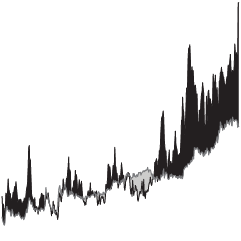Congratulations, Cody, the winner of a brand new copy of The Visual Display of Quantitative Information!
Thank You Everyone
Thank you to everyone who left comments and participated in this celebratory contest over the past ten days and for all of the congratulatory wishes. I read every single comment and it only confirms my belief that FlowingData readers are awesome. My favorite discussions were those around the Google API and the redesign of Dolores Labs color cloud. I was also amused by the introduction of the term statcore by Dibyo.
I had a lot of fun running this contest, and really felt like there was this excitement revolving around data. That makes me happy. I hope that now, even though there’s no prize up for grabs, that all of you will continue to leave comments and add to the conversation. Interacting with all of you is one of my favorite parts about FlowingData.
Also, thanks a lot to Andrew, Kaiser, and Tony for helping me promote the contest.
More Contests Ahead
On that note, seeing how this contest was so successful, you should look forward to more contests ahead. I’m thinking end of April. Maybe Tufte’s second book? Or maybe a movie. I don’t know, what do you guys think should be the prize for the next FlowingData contest?
Thanks again, everyone. Here’s to the start of a good week.
P.S. Don’t forget to tell your friends! We’re still working towards 5,000.


 This just might be nerdy statistics overload even for me. A group from the John Hopkins biostatistics department has created parodies of Sir Mix-A-Lot’s Baby Got Back and MC Hammer’s Too Legit To Quit. For your listening pleasure –
This just might be nerdy statistics overload even for me. A group from the John Hopkins biostatistics department has created parodies of Sir Mix-A-Lot’s Baby Got Back and MC Hammer’s Too Legit To Quit. For your listening pleasure – 







 Despite the Academy’s efforts to crack down on bootlegging, its attempts haven’t done a whole lot. Focus on stopping one area, like downloading, another area just grows more prolific, like Region 5 DVDs from overseas. A quick search in the right places will show you that piracy isn’t going away any time soon.
Despite the Academy’s efforts to crack down on bootlegging, its attempts haven’t done a whole lot. Focus on stopping one area, like downloading, another area just grows more prolific, like Region 5 DVDs from overseas. A quick search in the right places will show you that piracy isn’t going away any time soon. Since I enabled the plugins and started to-do lists, my browsing time has gone down a whopping 3.5% – from 10.11 hours per day to 9.76 hours per day. Ok, it doesn’t sound like much, but there’s a bit more to the story.
Since I enabled the plugins and started to-do lists, my browsing time has gone down a whopping 3.5% – from 10.11 hours per day to 9.76 hours per day. Ok, it doesn’t sound like much, but there’s a bit more to the story. Visualize This: The FlowingData Guide to Design, Visualization, and Statistics
Visualize This: The FlowingData Guide to Design, Visualization, and Statistics









